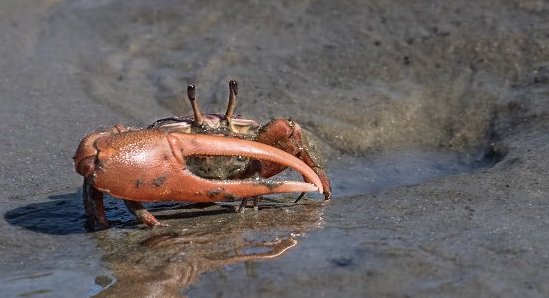Imagining Fiddler Crab: Saltwater Ecology

Fiddler Crab, Great Blue Heron, Silversides, and Knotted Spikerush
Coastal marshes are important ecological communities due to their ability to absorb floodwaters and replenish nutrients into the surrounding ecosystem. These marshes are home to specialized animals that have adapted to the constant cycle of flooding that occurs in these areas. One of these animals is the great blue heron, which is endangered in New York State. It forages through these marshes for small fish, crabs, insects, among other small organisms. Silversides are a species of fish that serve as a main food source for not only other foraging birds but also other mammals and fish that prey on smaller fish. Another common food source in coastal marshes are fiddler crabs. Fiddler crabs are also important because they encourage nutrient cycling and strengthen root growth of coastal plants, like cordgrass, a native plant. The prevalence of fiddler crabs in these marshes has been decreasing due to pollution and coastal development.
My name is Claudia Buszta, and I am an Environmental Geography major. I am working this year with Professor Haughwout on the 6th E Street project to illustrate how different organisms relate to each other within their ecological communities. Our focus is on regional ecosystems in New York State, identifying how native species interact with human activity. These summaries are meant to accompany the visualizations of the ecologies within the tunnels.